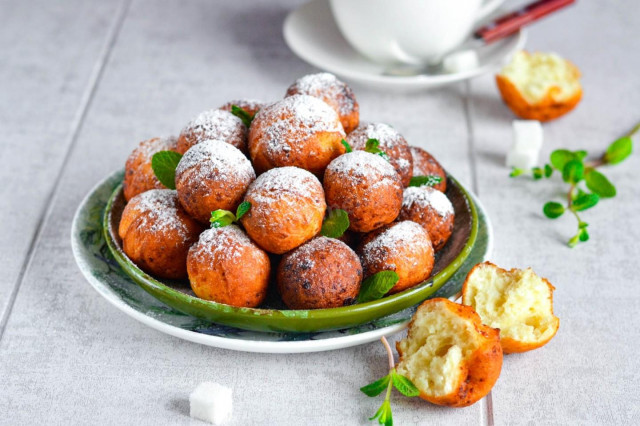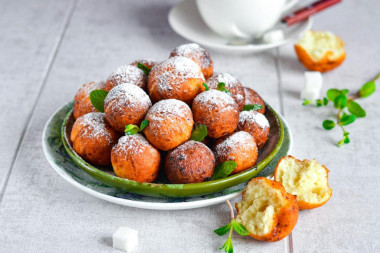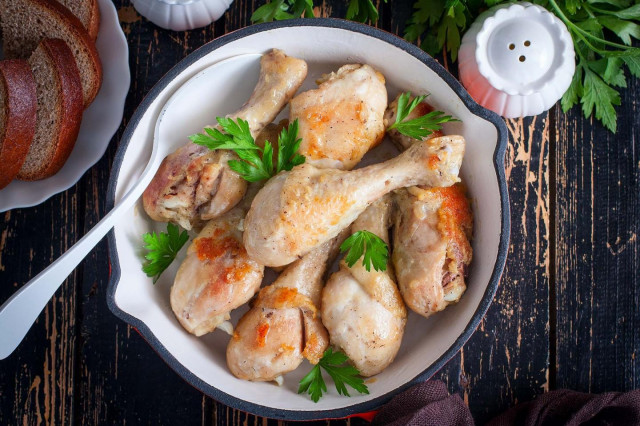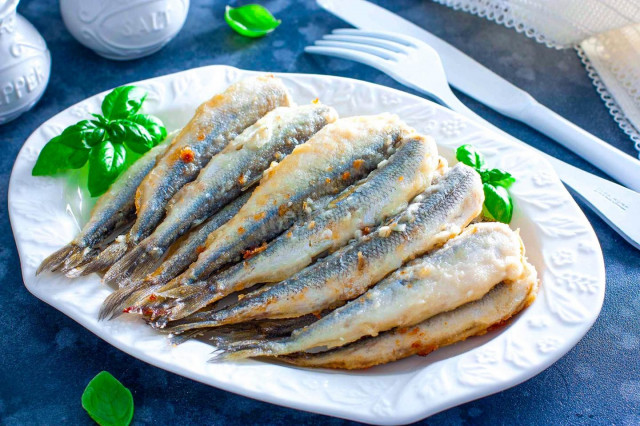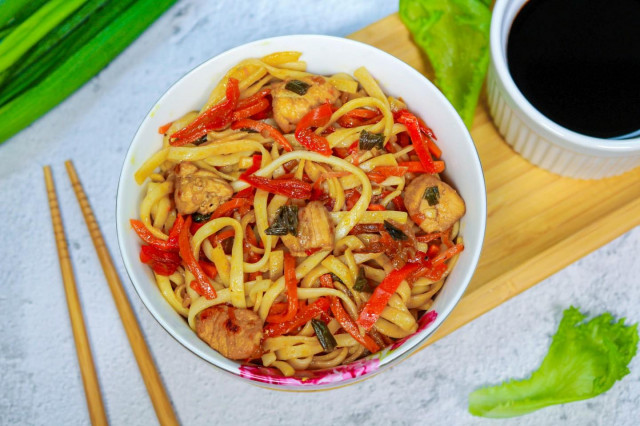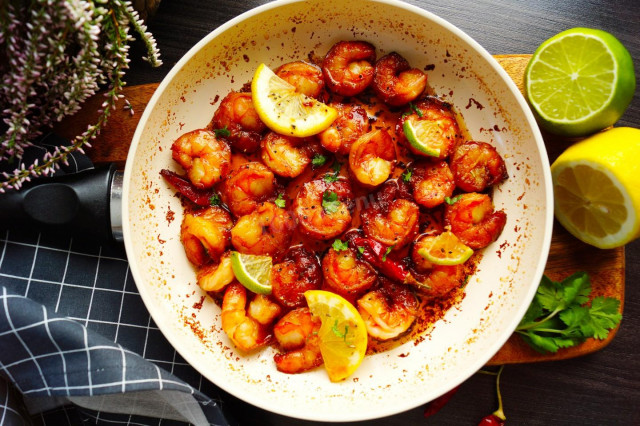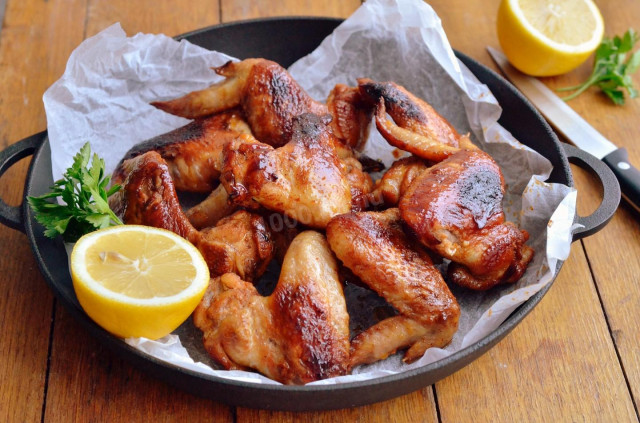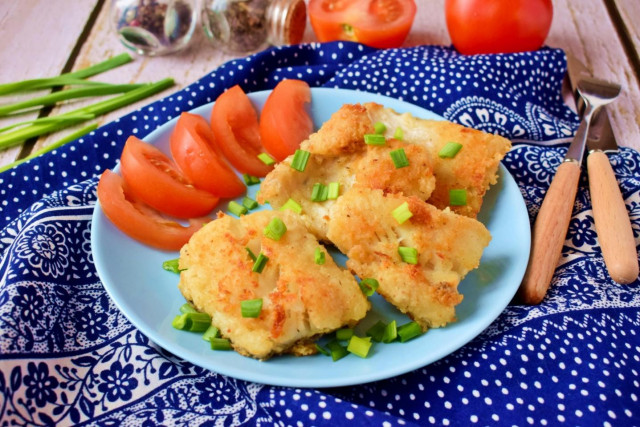Composition / ingredients
Step-by-step cooking
Step 1:
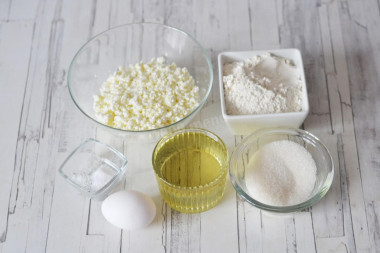
How to make cottage cheese balls fried in oil? Prepare the ingredients. Cottage cheese is suitable for any fat content, the main thing is that it is natural and tasty, without vegetable additives. Take refined, odorless oil for deep-frying.
Step 2:
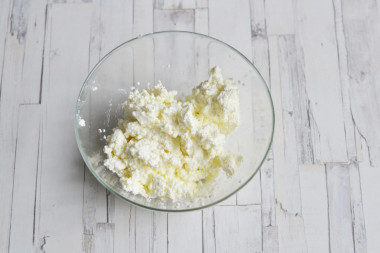
Rub the cottage cheese through a sieve or whisk with a blender. Do not skip this step — with crushed cottage cheese, the dough will be more homogeneous.
Step 3:
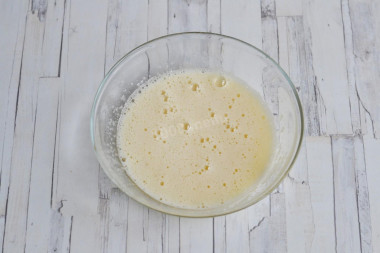
Beat the egg with sugar until a fluffy light mass. Be sure to wash the eggs before use, as even the seemingly clean shell may contain harmful bacteria. It is best to use food detergents and a brush.
Step 4:
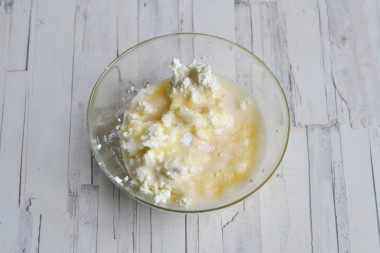
Add egg beaten with sugar, vanilla, soda and salt to the cottage cheese. Mix everything well.
Step 5:
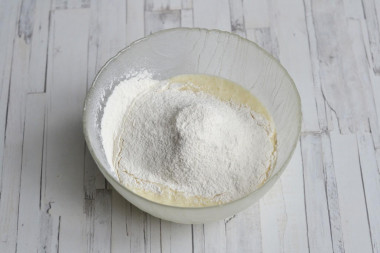
Sift the flour and pour it into the curd mass. Due to sifting, the flour will be saturated with oxygen, which will make the balls more lush.
Step 6:
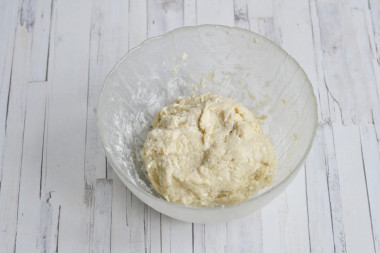
Knead the sticky dough. You do not need to try to add more flour to remove the stickiness, otherwise the finished dish will turn out dense and faded. Therefore, the amount of flour stated in the recipe is approximate. It can take both more and less, look at the consistency of the dough.
Step 7:
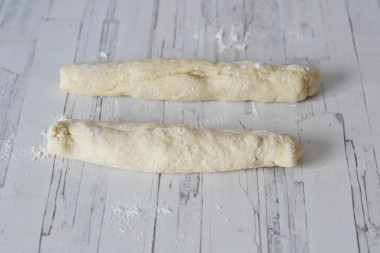
On a floured dough table, roll up small sausages and cut each into identical pieces weighing about 20 g each.
Step 8:
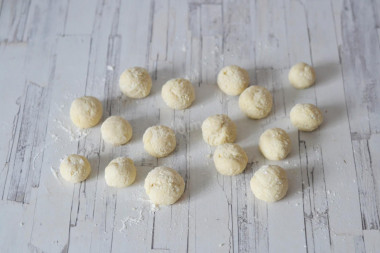
Roll small, even balls out of each piece.
Step 9:
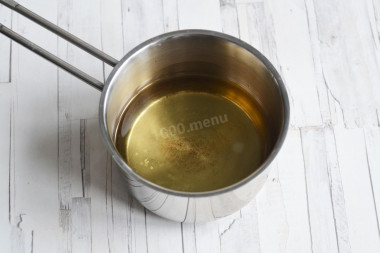
Heat vegetable oil in a saucepan over medium heat.
Step 10:
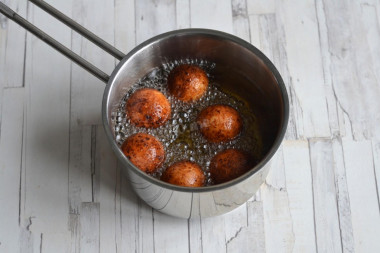
Spread the curd balls in small portions and fry them, turning them over, until a golden crust appears. During frying, the curd balls increase in size by 2-3 times, so you should not throw them a lot at once.
Step 11:
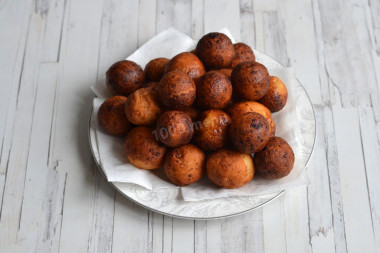
Transfer the finished balls with a slotted spoon to a dish with a paper napkin so that excess fat is absorbed into it.
Step 12:
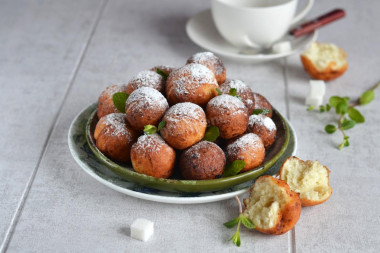
Cool the curd balls slightly and sprinkle with powdered sugar. Serve to the table. Enjoy your meal!
In general, I try to cook something deep-fried less often, although I love French fries to the point of insanity. But last year I cooked cottage cheese fingers according to about the same recipe. At that time, the cottage cheese fried in oil was a real discovery for me. This time, instead of fingers, I decided to cook balls.
They turned out even tastier than fingers — softer and more lush, or so it seemed to me.
However, my fastidious child ate almost the entire plate himself and left us only a few pieces.
The most wonderful thing is that you can use cottage cheese of any fat content for dessert. It is believed that the fatter the cottage cheese, the tastier the pastries. And it's usually true, but not in this case. Even with low-fat cottage cheese, the delicacy will turn out lush and airy. Therefore, I took cottage cheese with a fat content of only 0.2%.
Important! In order for the curd dough or filling to be successful, it is important to carefully consider the choice of cottage cheese. A low-quality product can spoil baking, as it directly affects the consistency, taste and final result. How to choose the right cottage cheese for dough or filling read in this article .
To check whether the oil has warmed up well enough in the pan, you can do it in a simple way. Lower a wooden spatula into it. If bubbles have gathered around it, then you can start the frying process.
Any oils are useful only until a certain temperature is reached - the point of smoking, at which the oil begins to burn and toxic substances, including carcinogens, are formed in it. How to determine the roasting temperature and choose the best oil for frying, and which is better not to use at all, read here .
Caloric content of the products possible in the composition of the dish
- Chicken egg - 157 kcal/100g
- Egg white - 45 kcal/100g
- Egg powder - 542 kcal/100g
- Egg yolk - 352 kcal/100g
- Ostrich egg - 118 kcal/100g
- Cottage cheese of 40% fat content - 466 kcal/100g
- Cottage cheese of 20% fat content - 233 kcal/100g
- Cottage cheese of 18% fat content - 226 kcal/100g
- Cottage cheese of 10% fat content - 156 kcal/100g
- Low-fat cottage cheese - 75 kcal/100g
- Cottage cheese with sour cream - 260 kcal/100g
- Fruit cottage cheese - 147 kcal/100g
- Soft dietary cottage cheese - 170 kcal/100g
- Vitalinia cottage cheese - 64 kcal/100g
- Cottage cheese "morning" ( "danone") without sugar - 91 kcal/100g
- Cottage cheese - 156 kcal/100g
- Whole durum wheat flour fortified - 333 kcal/100g
- Whole durum wheat flour, universal - 364 kcal/100g
- Flour krupchatka - 348 kcal/100g
- Flour - 325 kcal/100g
- Granulated sugar - 398 kcal/100g
- Sugar - 398 kcal/100g
- Vegetable oil - 873 kcal/100g
- Salt - 0 kcal/100g
- Vanillin - 288 kcal/100g
- Powdered sugar - 374 kcal/100g
- Baking soda - 0 kcal/100g

